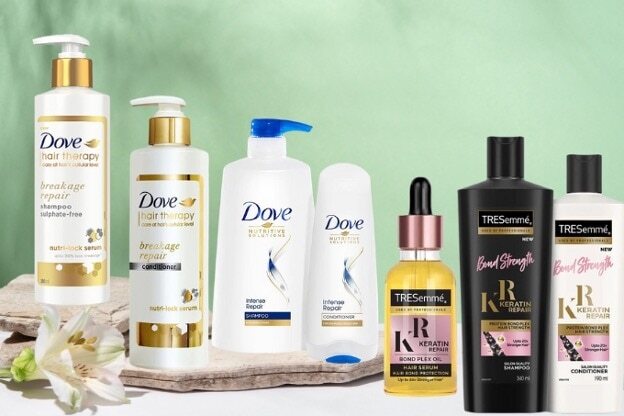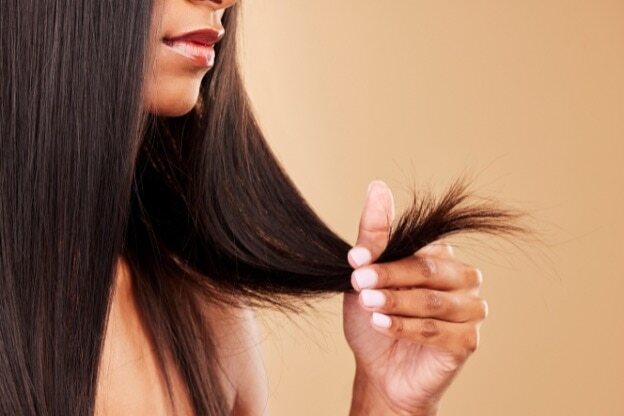Greetings, hair aficionados and split-end survivors! Today, we're delving into a common hair woe that unites us all – split ends and how to get rid of split ends in hair. From excessive heat styling to environmental factors, our precious locks face numerous challenges that can leave them frayed and damaged. But fear not! In this informative guide, we're diving into tried and tested solutions for split ends that actually work! Get ready to bid farewell to those pesky split ends and say hello to healthier, more luscious locks. Whether you're seeking DIY remedies or hair treatment for split ends, we've got you covered. So, let's embark on a journey to repair your hair health and bring back hair integrity. Your hair deserves some tender loving care, and we're here to make it happen!
01Causes of Split Ends
Why split ends happen?
Split ends hair, also known as trichoptilosis, is a common hair condition characterized by the splitting or fraying of the hair shafts. They occur when the protective outer layer of the hair, known as the cuticle, becomes damaged or worn away, exposing the inner layers of the hair strand.
Factors Contributing to Split Ends Hair:

Excessive Heat Styling: Using heat-styling tools such as flat irons, curling irons, and blow dryers without heat protection can cause the hair to become dry and brittle, leading to split ends. Chemical Processing: Chemical treatments like bleaching, colouring, perming, and relaxing can weaken the hair structure and make it more prone to splitting and breakage. Overwashing: Washing the hair too frequently or using harsh shampoos can strip away the natural oils that keep the hair hydrated and protected, resulting in dryness and split ends. Environmental Factors: Exposure to environmental stressors such as sun exposure, wind, humidity, and pollution can damage the hair cuticle and contribute to split ends hair. Poor Haircare Practices: Rough handling of the hair, excessive brushing or combing, and using elastics or hair accessories that cause friction can weaken the hair shaft and promote split ends.
02Preventing Split Ends


Preventing split ends requires a combination of good haircare practices and minimizing exposure to damaging factors. Here are some tips on how to get rid of split ends in hair: Regular Trimming: Schedule regular haircuts every 6-8 weeks to remove split ends and prevent them from traveling up the hair shaft. Even if you're growing out your hair, slight trims and hair dusting can help maintain its overall health and appearance. Use a Wide-Tooth Comb: An easy split end treatment is to use a wide-tooth comb instead of a brush to minimize breakage and damage. Do it on wet hair, start from the ends and work your way up slowly, being gentle and patient. Limit Heat Styling: Reduce the frequency of using heat-styling tools such as flat irons, curling irons, and blow dryers. When you do use them, apply a heat protectant spray or serum to minimize damage to the hair shaft. Use The Right Haircare Products: Instead of your usual shampoo and conditioner, look for formulas that work on strengthening your hair to prevent more split ends. The Tresemmē Bond Plex Repair range has a shampoo, conditioner and serum which repair the hair bonds that make up your hair strands. The Dove Hair Therapy Breakage Repair range uses a nutri-lock serum to make your hair thicker and stronger while being free of sulphates and parabens. Dove has yet another range, the Dove Intense Repair Shampoo and Conditioner that detangles and nourishes your hair with fibre actives on a cellular level. Opt for Air Drying: Whenever possible, allow your hair to air dry naturally instead of using heat styling tools. If you must use a blow dryer, use the lowest heat setting and keep the dryer at least 6 inches away from your hair. Protect Your Hair From the Sun: Prolonged exposure to the sun's UV rays can damage the hair cuticle and lead to split ends. Wear a hat or use a UV protectant spray when spending time outdoors to shield your hair from harmful UV radiation. Use a Silk or Satin Pillowcase: Cotton pillowcases can cause friction and lead to hair breakage and split ends hair. Switch to a silk or satin pillowcase to minimize friction and help your hair retain moisture while you sleep. Moisturize Regularly: Keep your hair hydrated by using a moisturizing shampoo and conditioner, especially if you have dry or damaged hair. Consider using a deep conditioning treatment or natural hair mask once a week to nourish and strengthen your locks. Oil treatments such as argan oil and coconut oil on a weekly basis can also seal your hair cuticles and prevent splits. Protect Your Hair While Swimming: Chlorine from swimming pools and saltwater from the ocean can strip moisture from your hair and cause damage. Before swimming, wet your hair with clean water and apply a leave-in conditioner or oil to create a protective barrier. Eat a Healthy Diet: A balanced diet rich in vitamins, minerals, and protein is essential for healthy hair growth and maintenance. Incorporate foods such as fruits, vegetables, lean proteins, and omega-3 fatty acids into your diet to support strong and resilient hair. By incorporating a hair treatment for split ends into your haircare routine, you can help prevent split ends and keep your locks looking healthy, vibrant, and beautiful. Remember that consistency is key, so make these practices a regular part of your haircare regimen for optimal results.
03FAQs on Split Ends
Q1. How can I tell if I have split ends?
Split ends are typically visible along the lengths of the hair shafts. They appear as small splits or frayed ends, and the hair may look dull, dry, or brittle. Running your fingers along the ends of your hair or examining them closely in natural light can help you identify split ends hair.
Q2. How often should I trim my hair to prevent split ends?
It's generally recommended to trim your hair every 6-8 weeks to remove split ends and prevent them from traveling up the hair shaft. However, the frequency of trims may vary depending on individual hair type, length, and styling habits.
Q3. Can I prevent split ends?
While split ends hair cannot be entirely prevented, you can minimize its occurrence by adopting healthy haircare practices. This includes reducing the use of heat styling tools, using a wide-tooth comb to detangle wet hair, avoiding harsh chemicals, protecting your hair from environmental damage, and maintaining a balanced diet.





